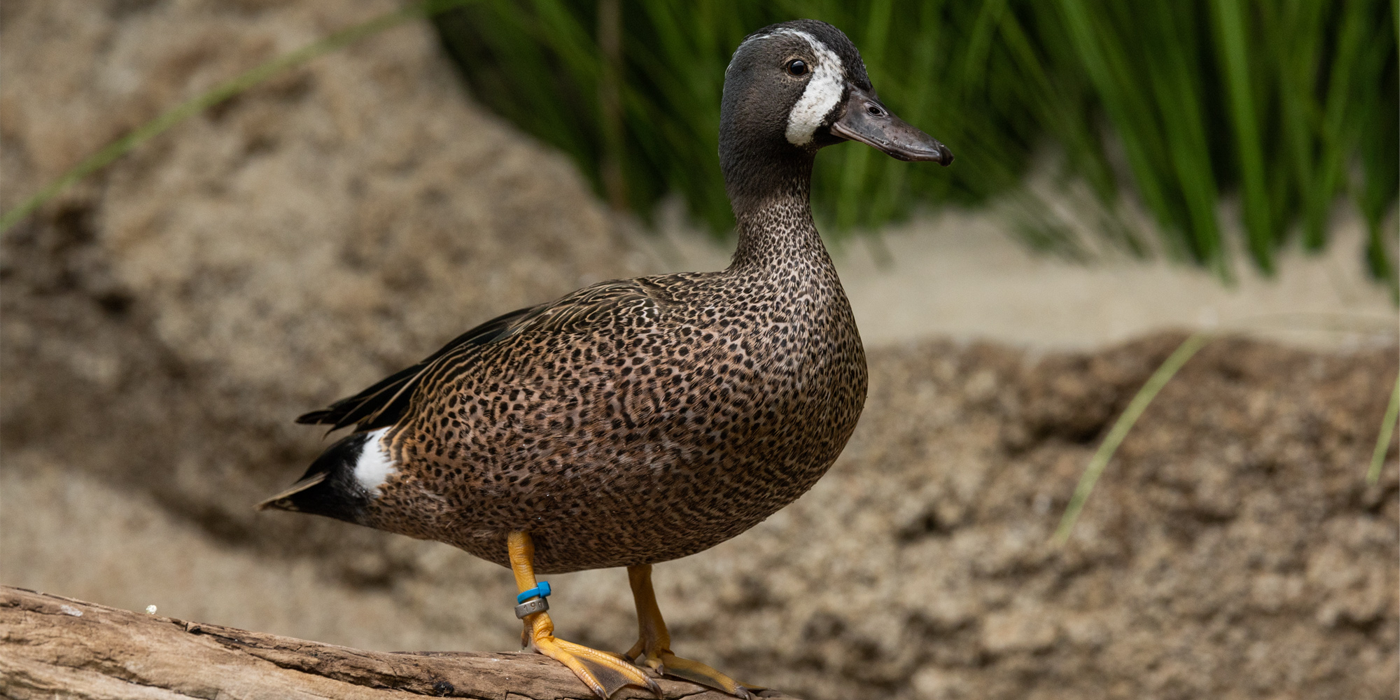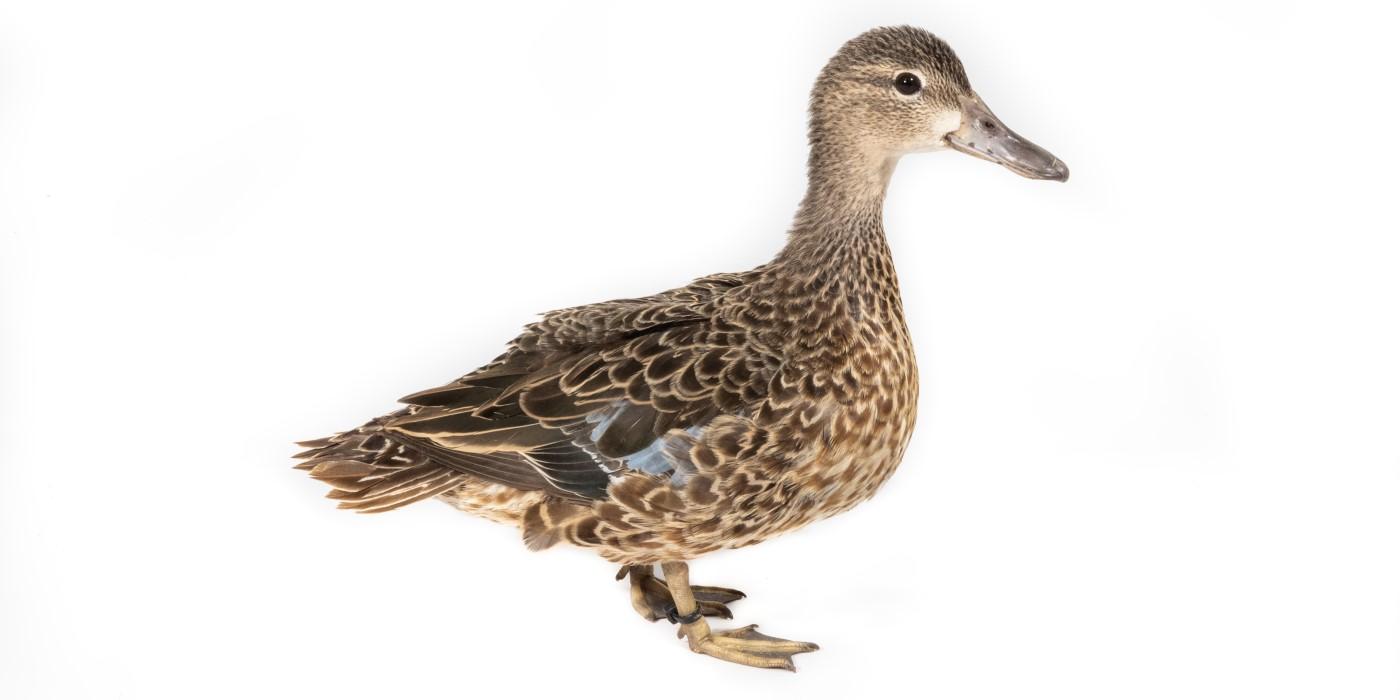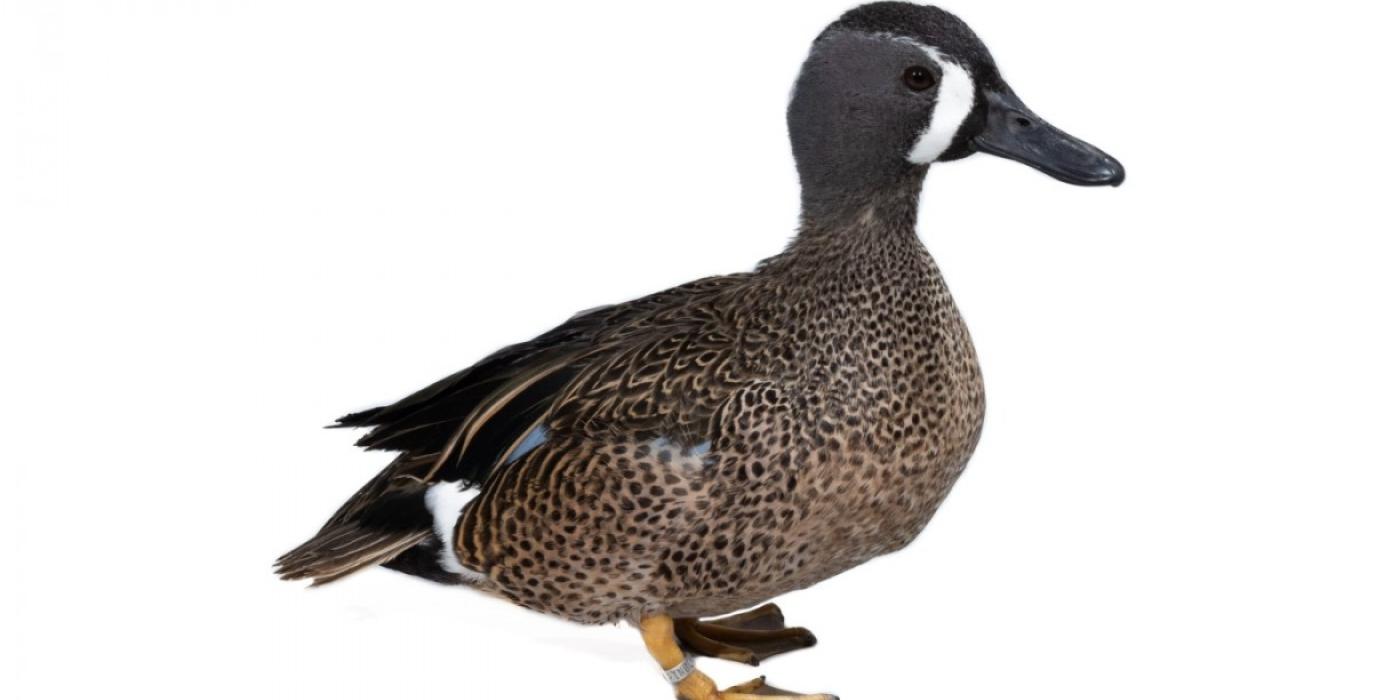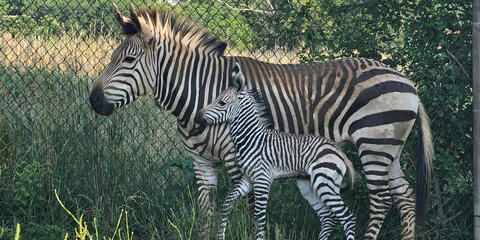A bit of a warm-weather duck, blue-winged teals seem to spend more time on their wintering grounds in Central and South American than any other dabbling duck in the Americas. These small dabbling ducks are often seen in pairs or small groups at the edges of ponds and lakes.
Physical Description
Blue-winged teals are named for their upperwing covert feathers—meaning, feathers that cover the bases of the flight feathers—which are powder-blue in color. These feathers can only be seen when the ducks are flying.
Male blue-winged teals have a slate gray-blue head with a white crescent in front of their eyes. Under their blue covert feathers, males’ have green secondary wing feathers. Their bodies are brown with dark speckles and they have black feathers on their wings and tail. Females are mottled brown, like female green-winged teals and mallards, but have more white around their bills. Both males and females have large, black bills.
Size
Blue-winged teals are 14 to 16 inches long (35 to 40 centimeters) and weigh about a pound (0.45 kilograms), with males being slightly larger than females. Their wingspan measures just under 2 feet (between 56 and 62 centimeters.)
Native Habitat
Blue-winged teals can be found in grasslands and wetlands throughout the year. During their breeding season, they flock to North America’s flooded northern prairies, sometimes called the Prairie Pothole region. This region is part of the Great Plains and primarily focuses in the Upper Midwest. Here, these ducks live in temperate grasslands that are seasonally flooded with melted snow and spring rains, forming "potholes" of water that dot the landscape.
One of the last ducks to migrate north in the spring and south in the fall, blue-winged teals seem to spend more time than other ducks in their wintering grounds in Central and South America. Some of these ducks also winter in southern Texas and peninsular Florida. In these warmer climates, blue-winged teal habitats are diverse, including tropical grasslands and freshwater lakes and marshes.
Lifespan
On average, blue-winged teals live 10 to 17 years in the wild. The oldest recorded wild male was 23 years old.
Communication
The blue-winged teal has a high-pitched whistle and bleats in frequent, evenly-spaced intervals.
Food/Eating Habits
The blue-winged teal is a dabbling duck, meaning they eat along the surface of the water instead of diving to look for food. They gather food from the water’s surface or partially submerge their head and swim forward, grabbing food as they go. These ducks primarily eat seed and aquatic vegetation including grasses, algae, duckweed and pondweed. They will also eat aquatic invertebrates like snails, bivalves, insects and crustaceans. Blue-winged teals primarily forage in shallow water.
Social Structure
Males and females begin forming breeding pairs in early winter. Blue-winged teals are often seen in pairs or small groups at the edges of ponds and lakes. They are sometimes seen mixed in with other duck species.
Reproduction and Development
Females will choose their nest site among grassy areas. Nest site locations can be in a prairie, hayfield or coastal meadow, but are always on the ground and usually hidden by surrounding vegetation. Once the site is chosen, the female blue-winged teal will create a shallow depression, or scrape, and fill it with some grass and line it with down feathers.
Blue-winged teals usually lay between nine and 13 eggs. Females incubate the eggs alone for 23 or 24 days. Within 24 hours of hatching, chicks leave the nest and start forging for themselves. The mother will stay by the nest and help care for young for a few weeks before leaving the ducklings completely on their own. Ducklings are able to fly about 40 days after hatching.
Conservation Efforts
Blue-winged teal populations have remained stable over the past five decades. It’s estimated they are the second most abundant duck in North America. However, their prairie breeding grounds could be at risk if efforts do not continue to increase and maintain the grassland habitats. They are also vulnerable to the loss or degradation of their wetland habitats, like other ducks.
Since these ducks migrate south earlier in the fall, not many are found in the United States when duck-hunting season begins. Additionally, hunting limits per species are updated annually to help safeguard against population declines.






